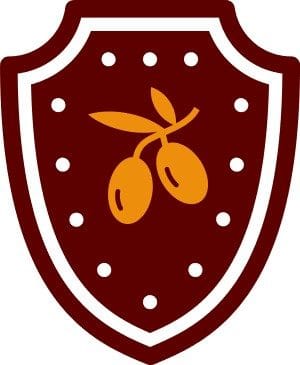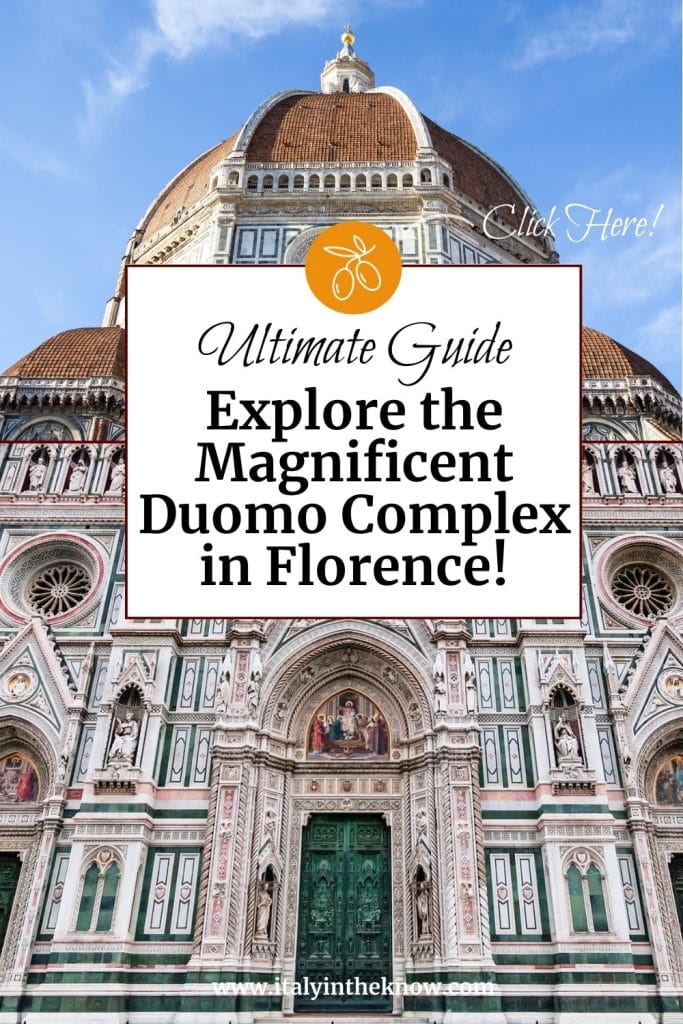Florence Duomo Complete Guide: What You Need To Know For A Fantastic Visit
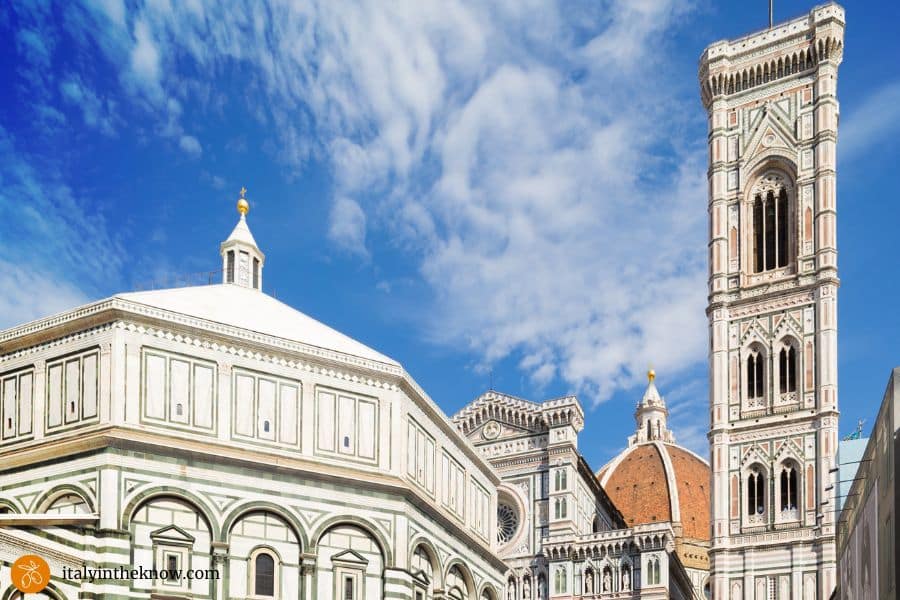
Here you’ll find what you need to know before visiting the Florence Duomo Complex that houses the Cathedral of Santa Maria del Fiore with Brunelleschi’s Dome, the Baptistery, Giotto’s Bell Tower, the Basilica of Santa Reparata, and the Opera del Duomo Museum. These iconic sites are the city’s religious center. Dominating the city skyline, they are an enduring symbol of Florence.
Most people planning to visit Florence have the Cathedral and/or at least some of the Duomo Complex on their list of must-see sites. If it’s not on your list, I recommend you consider adding it, particularly if this is your first trip.
The complex and its two piazzas – Piazza del Duomo and Piazza San Giovanni – are teeming with activity and the atmosphere is lively and vibrant. The combination of art, history, and everyday life here creates an unforgettable experience.
Use this table of contents to easily navigate within the post:
The Florence Duomo Complex
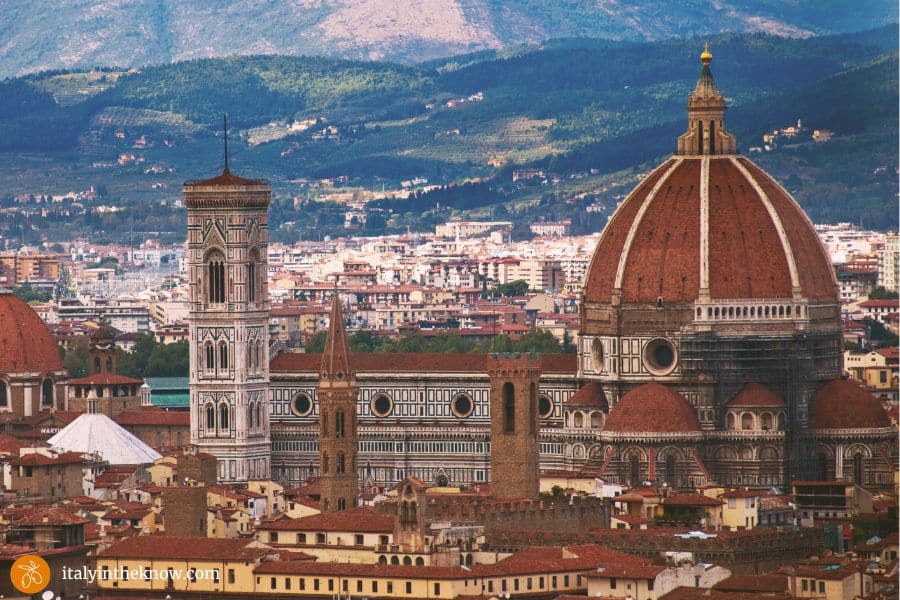
The Duomo Complex has a rich architectural and artistic heritage. Here you’ll find summaries and highlights of each site to help you decide what you want to see.
This will make it easier to choose which ticket pass to buy for your visit. The sites appear in the order built.
Basilica of Santa Reparata
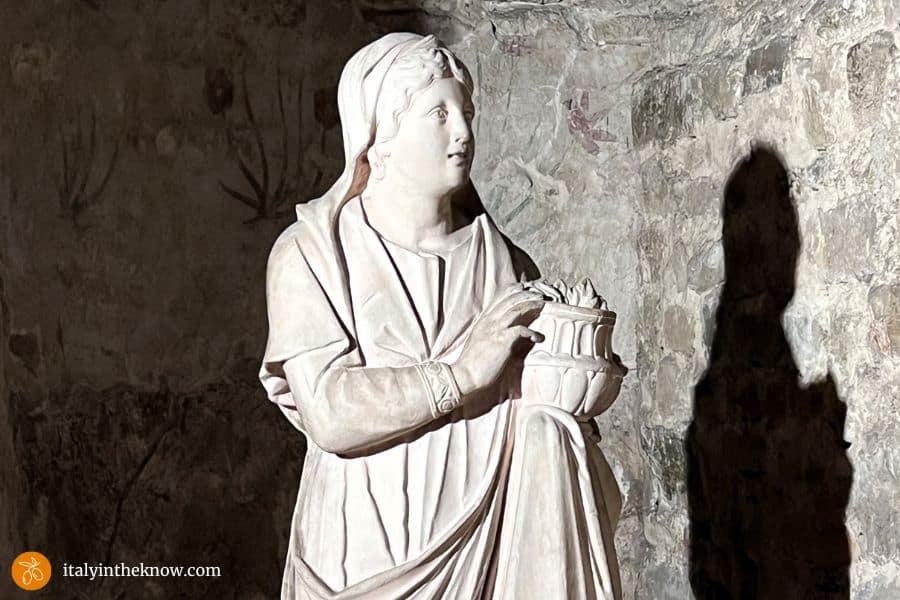
To tour the archaeological excavations of the Basilica of Santa Reparata you must go under the present Cathedral. Santa Reparata is ancient. In fact, its history spans nearly a thousand years.
Over this period, there were three different churches found on the site. During your visit, you will see evidence of all three.
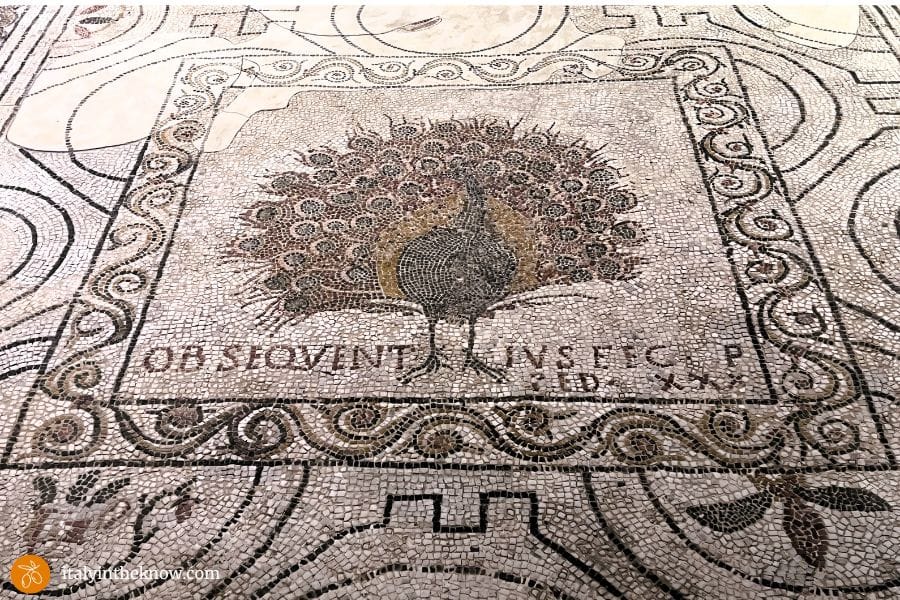
The first church of Santa Reparata was built during the late Roman Empire. It was a large and classic basilica with a beautiful mosaic floor.
Tradition says the church was built as a tribute to a victory against Ostrogoth invaders. At the time, Zenobius was the first bishop of Florence (later elected a patron saint of Florence.)
He called on Saint Reparata to intercede. After the barbarians’ defeat, the Florentines dedicated the church to this young saint.
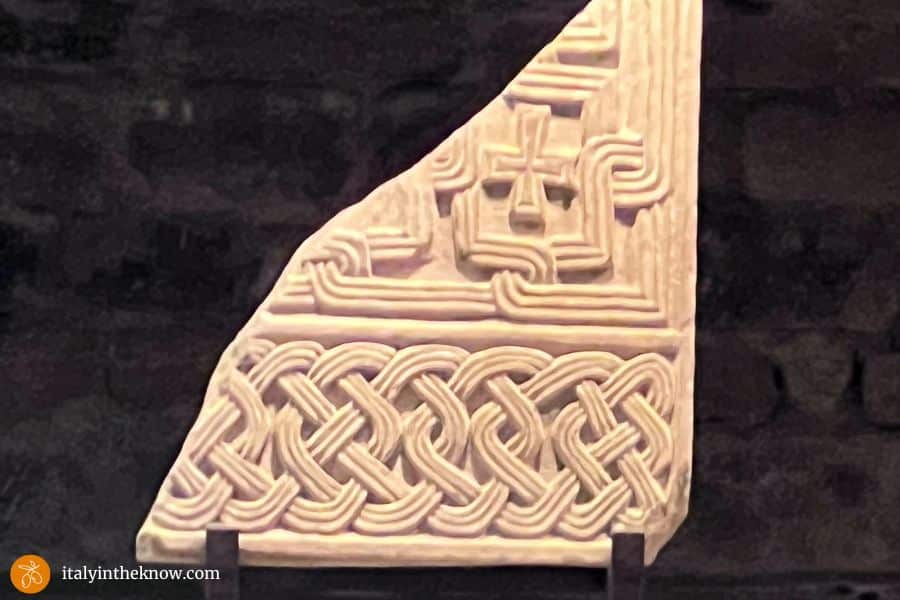
The church was rebuilt during the 8th and 9th centuries. You’ll see decorative fragments dating back to this Carolingian reconstruction on display.
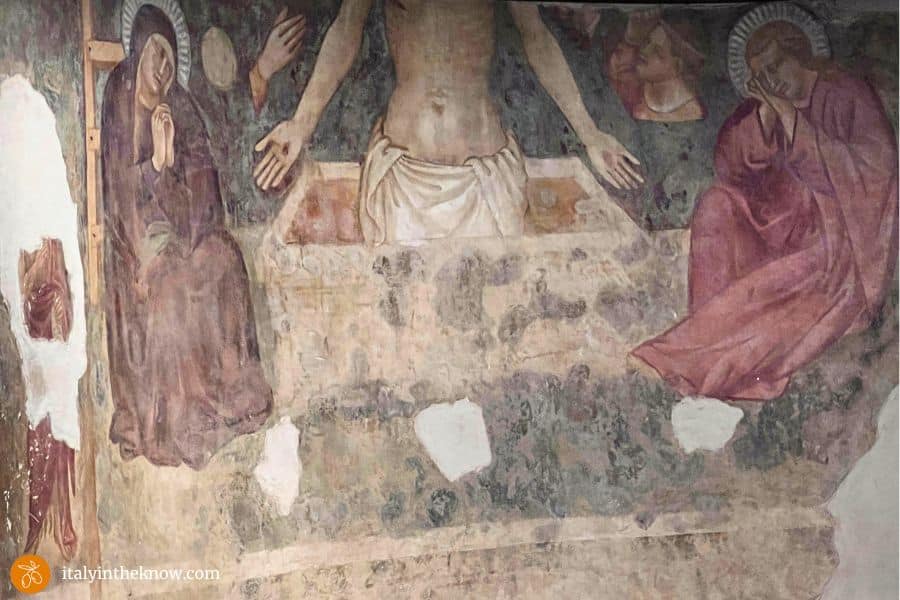
The third Santa Reparata was built in the Romanesque style characterized by rounded arches. Remarkably, it continued in use for 80 years after the new Cathedral was started and being built around it.
During this period, improvements to the older structure continued including frescos, statues, and an altarpiece.
The excavations also include numerous tombstones of leading citizens. One major discovery was the tomb of Filippo Brunelleschi, who designed and built the Cathedral dome.
The Baptistery
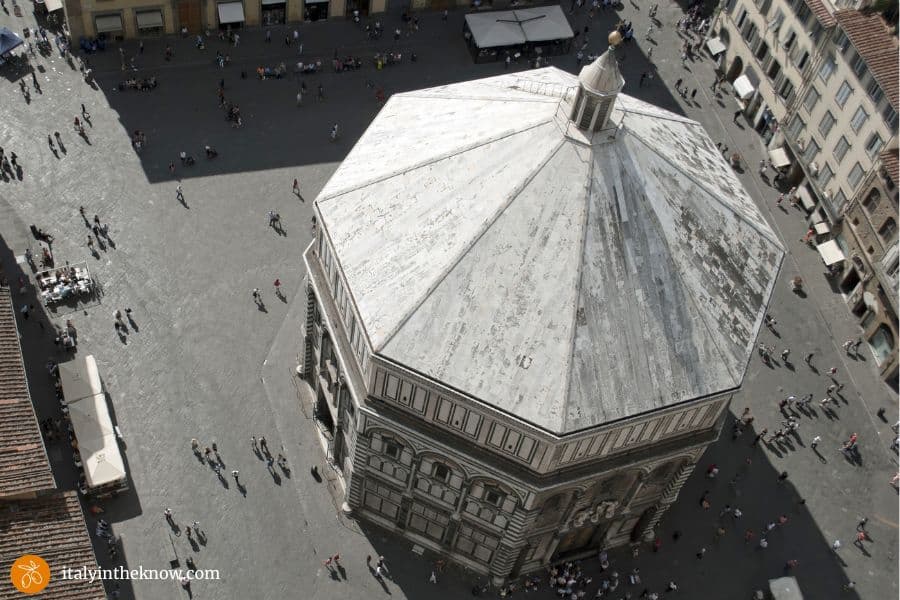
The Baptistry of San Giovanni is named for John the Baptist, a patron saint of Florence. As a baptismal church, it was where the sacrament of baptism was administered.
While the city had many parish churches, all baptisms took place at the Baptistery. As such, baptisms had a double meaning. They were a redemption from sin and promise of eternal life. In addition, they also represented the child’s introduction to the Florence community.
The Baptistery is one of Florence’s oldest buildings. However, when built, the nearby Basilica of Santa Reparata had been standing for over 500 years. Its construction started in 1059 and was completed a century later.
Florentines celebrated by placing the copper ball you see today on top of the lantern. The term “lantern” is different than what first comes to mind today.
At the top of the Baptistery, it’s the openwork section used to admit light and allow smoke to escape (both very important back then).
Like Santa Reparata, there was an older church on the site dating back to the early Christian period. Before that the location was a Roman domus (upper class home).
Exterior
The Baptistery’s architecture is Romanesque, and you’ll see many of the features of classical Roman architecture repeated (geometric shapes, rounded arches, and columns). Green and white marble creates harmony and connection with the interior of the church. You can see this same style at the Basilica of San Miniato, which is also worth a visit while in Florence.
The structure itself is full of symbolism. For example, the building is an octagonal shape standing for eternity, the “eighth day” beyond the seven days of creation and earthly life.
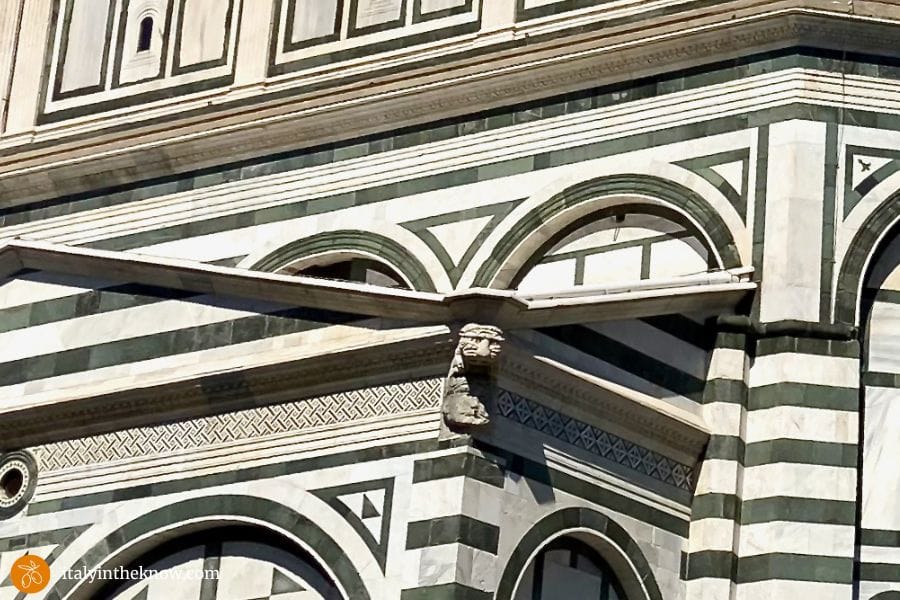
The side of the Baptistry opposite the Cathedral has a rectangular scarsella. At its corners you can still see gargoyles kept from the previous early medieval apse.
In Florence, the financing and maintenance of religious and public buildings was a civic responsibility taken on by the guilds. The Arte di Calimala, guild of the finishers and wool merchants, was responsible for the Baptistry. You see its emblem, the eagle with bales, above the north door of the Baptistery.
The Doors
Florence’s guilds were very competitive. In the 14th century, excitement was high as Florentines watched progress on their cathedral.
The Arte di Calimala became concerned about the attention. So, they decided to fund bronze doors for the three monumental entrances to the Baptistery.
At that time bronze was roughly ten times the cost of marble. So, it was an expensive undertaking.
Here are the basic details of what you’ll see:
First Set of Doors – Stories from the Life of John the Baptist
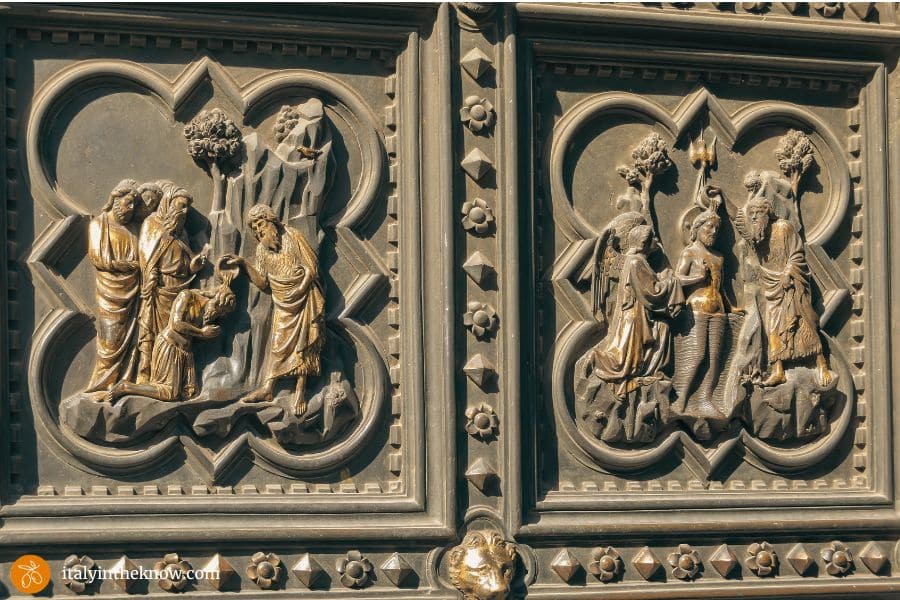
Andrea Pisano created the first pair of doors from 1330-1336. Gothic in style, these doors have individual scenes placed in quatrefoils (think four-leaf clovers).
Second Set of Doors – Stories from Life of Christ
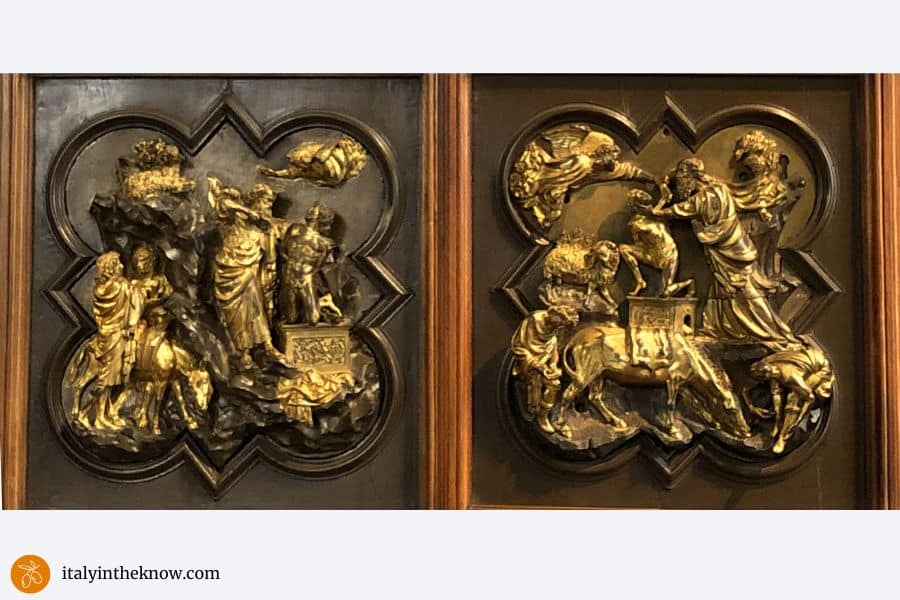
In 1401 the Arte di Calimala held a competition to choose the artist for the second set of doors. Above are entry panels by two of the contestants – Lorenzo Ghiberti and Filippo Brunelleschi. Which would you choose?
The commission went to Ghiberti and it took him 22 years to complete. In hindsight, the choice may have been providential as Brunelleschi went on to design and construct the cathedral dome.
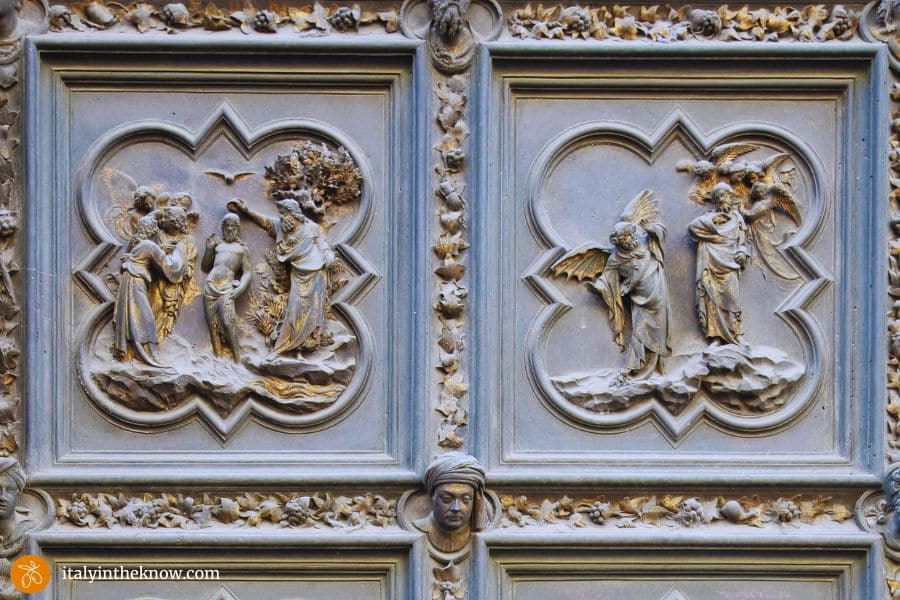
The scenes are within quatrefoils in Gothic style like the first set. But they show movement and backgrounds making them more dynamic than Pisano’s doors.
Third Set of Doors – Old Testament
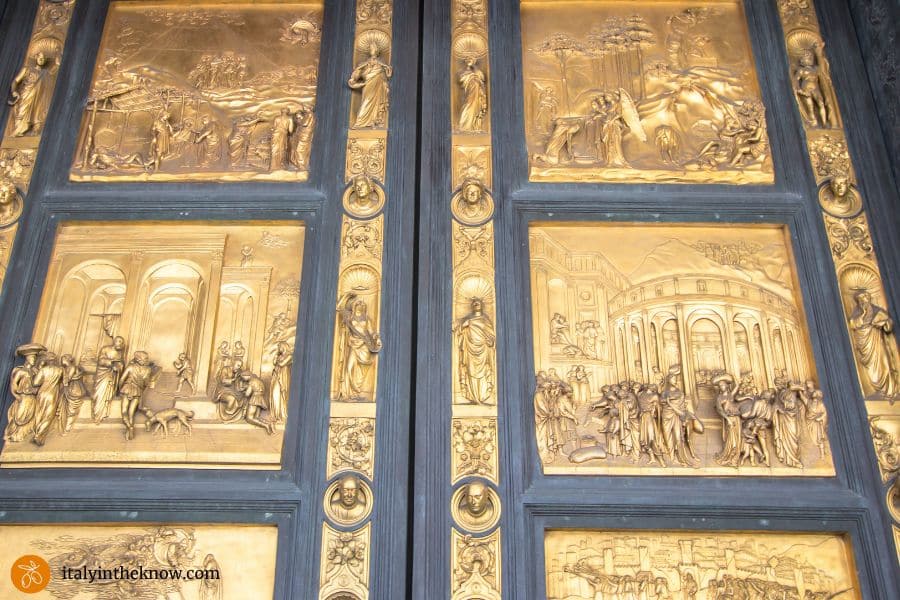
A year after he completed the second set of Baptistery doors, the Arte di Calimala asked Ghiberti to make the final pair. which he finished in 1452.
Unlike the first two sets, the doors had ten rectangular panels using perspective in the new Renaissance style. When finished, an awed Michelangelo called them the “Gates of Paradise”, the name that has stayed with them through the ages.
Interior
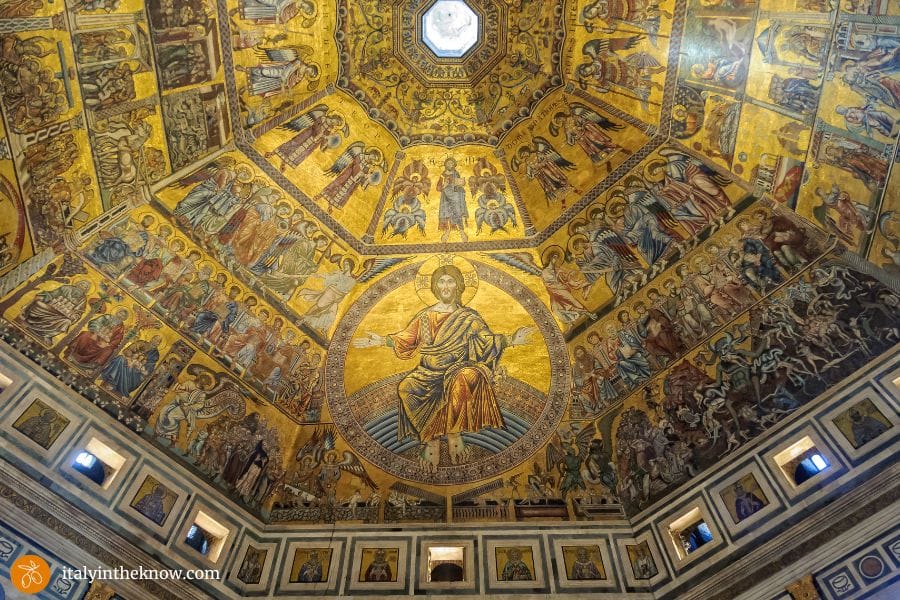
The domed ceiling was a 90-year project. It is covered by hundreds of thousands of gold mosaic chips. At the center/top is paradise and a 26-foot Christ the Judge presides overall.
Imagine what this looked like illuminated by candles and daylight. The effect would have been much different than the uniform electric lighting today.
The brightest appearance was at Easter when they lit a bonfire inside to symbolize Christ’s resurrection.
The floor mosaics have the feel of the Middle East due to new trade routes and the Crusades at that time. The patterns are like carpets instead of one overall design. Don’t miss the Zodiac with the solar disc in the center. The wording around the sun is a palindrome:
EN GIRO TORTE SOL CICLOS ET ROTOR IGNE
Here I, the sun, turn the orbits diagonally and am encircled by fire”
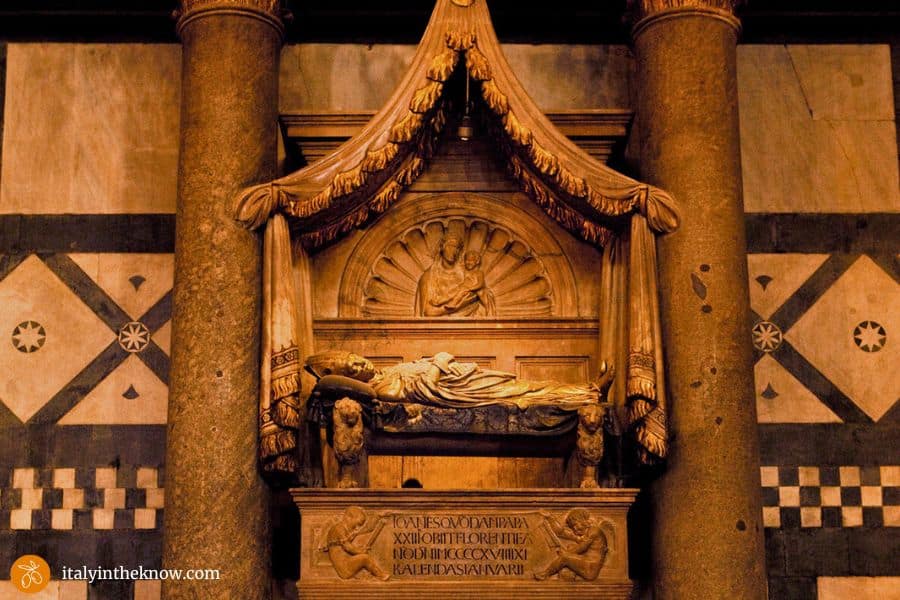
History buffs will enjoy seeing the tomb of Baldassarre Cossa, the antipope John XXIII during the Papal schism. It is beautifully and realistically done by Donatello and Michelozzo.
NOTE: The Baptistery is currently undergoing restoration of the vault’s mosaics which changes what you’ll be able to see.
Cathedral of St. Maria del Fiore and Brunelleschi’s Dome (Duomo)
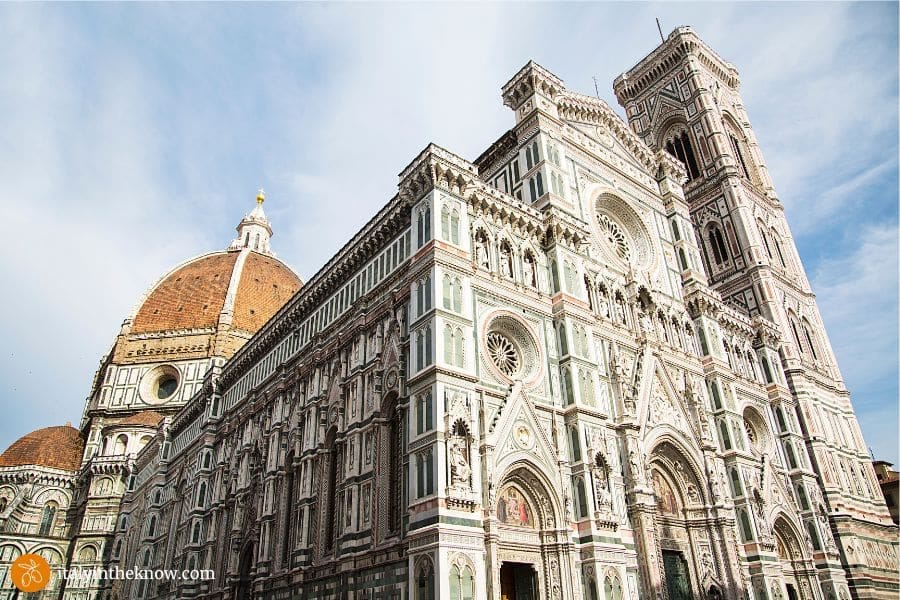
While known as the Duomo (meaning house), the church’s official name is the Cathedral of Santa Maria del Fiore. Its name comes from Florentia, the city’s original name when first established as a Roman colony.
Construction lasted for 140 years, with its walls going up around the Basilica of Santa Reparata that was still in use. Today it stands as an amazing triumph of creativity, faith and determination.
Exterior
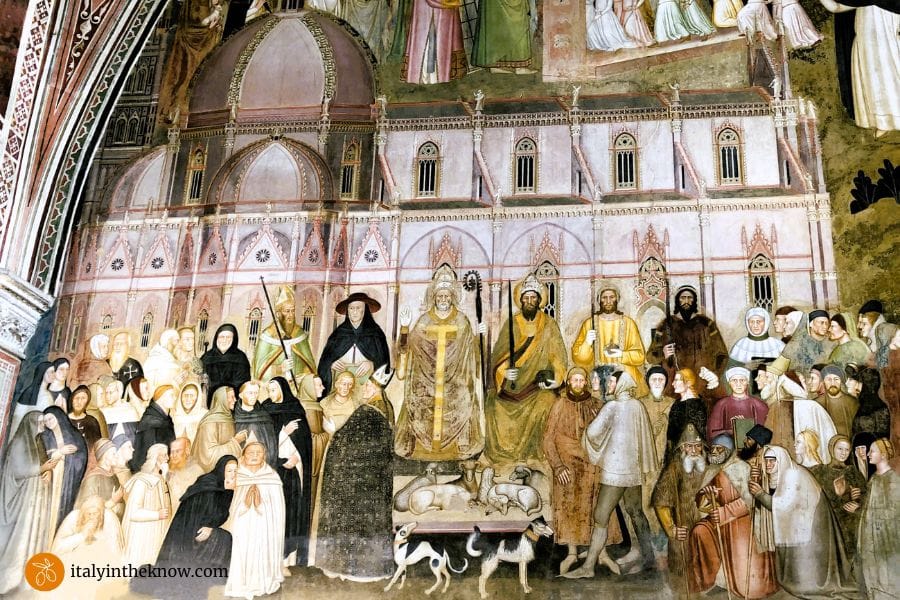
Thirteenth century Florentines wanted to build the largest church in the world with the highest and largest dome in the world. Between 1294 and 1296, they agreed on what this new cathedral and dome would look like.
It was an extremely ambitious project, especially since they had no idea how to build the dome. Nothing like it had been built since ancient Rome. In fact, the man who would figure out how it could be done hadn’t even been born yet.
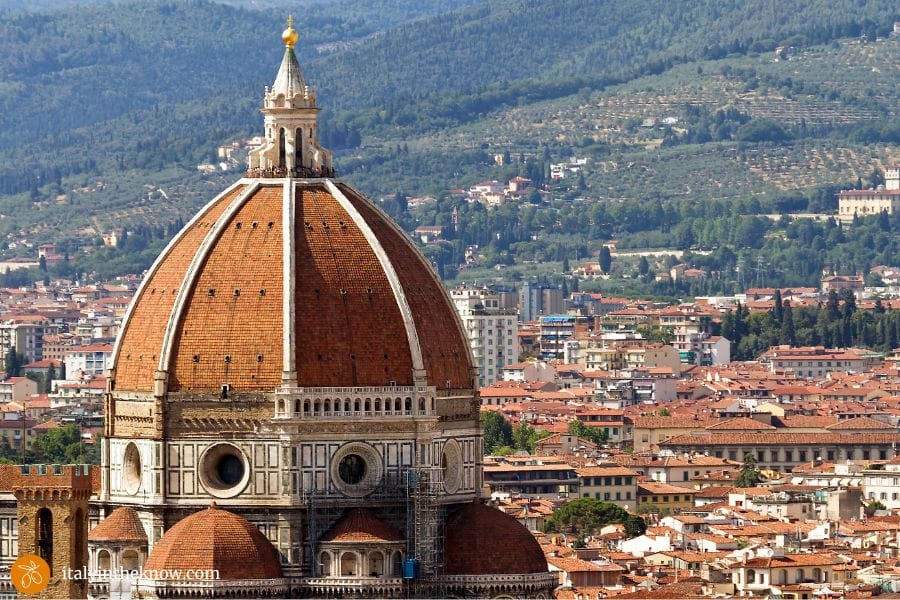
In 1420, Filippo Brunelleschi got the job of directing the dome’s construction. He did what most at the time believed impossible.
His solution was to create two shells with vertical ribs that meet at the top. You walk between these shells as you climb the dome.
Brunelleschi even had to invent new methods and tools to raise heavy materials. The project was a remarkable feat of engineering and inventiveness as well as a testament to his genius.
Key Details
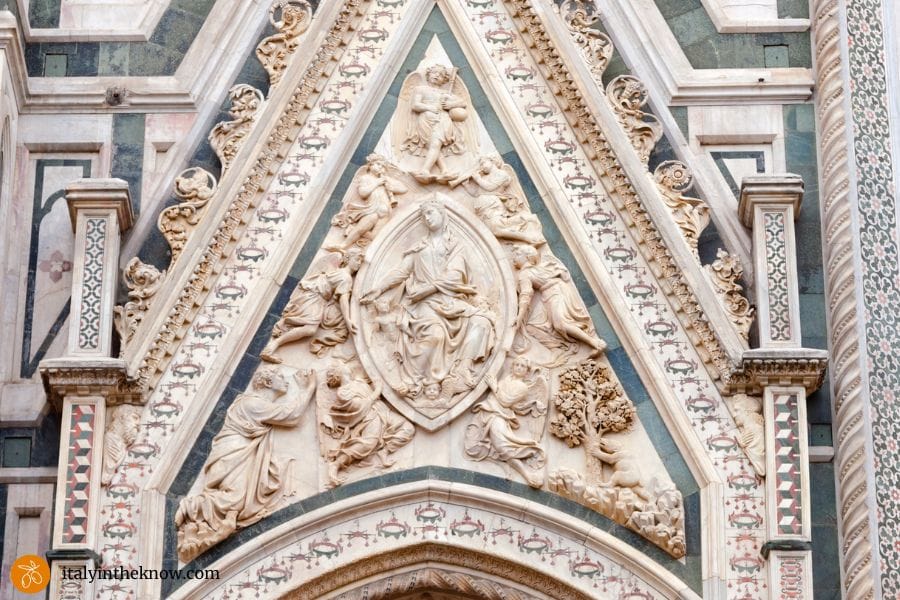
Along with the dome, there is much to see on the exterior. To avoid becoming overwhelmed, try to focus on a few things that stand out to you personally.
A couple details of note are:
– The beautiful Porta della Mandorla (the Almond Door) which shows the transition from Gothic to Renaissance in sculpted work. It is on the north side.
Mary sits in the almond-shaped center in the tympanum (triangular top section). Look closely at the border. It has hundreds of foreshortened candelabra hanging from chandelier-like rings. These show the understanding of perspective which marked the beginning of the Renaissance.
– Look way up to where the drum visually connects the Cathedral to the Dome. There you can see a walkway structure on the south-east side.
This was a failed attempt to complete the junction between drum and dome. Michelangelo called it a ‘cricket cage’. The name stuck and the rest of this section is still unfinished to this day.
Interior
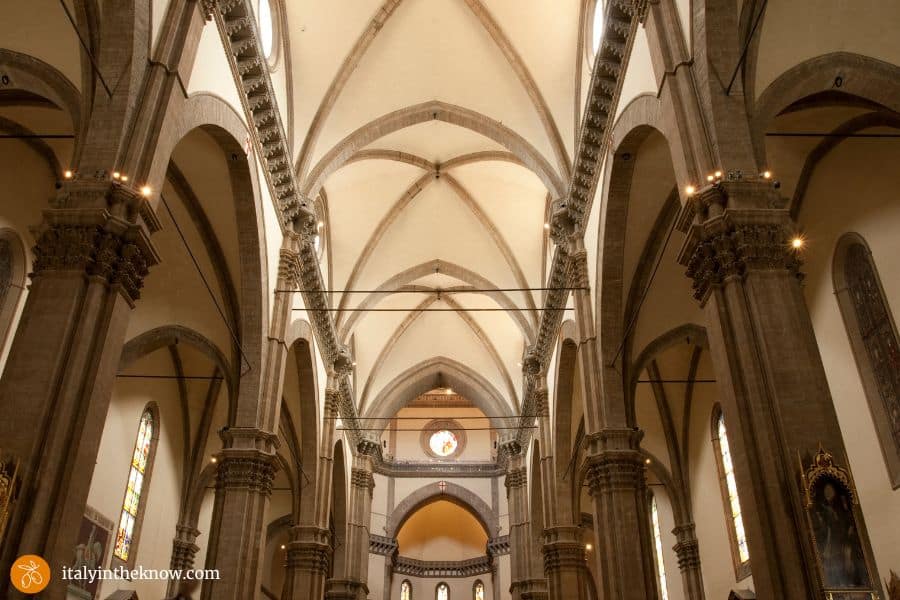
When entering the Cathedral, your first impression is that of vast space. It is so large that everything inside seems small. However, the inside is full of wonderful works of art, some quite large too.
Chapels
Looking toward the east as you enter is the semicircular apse with a tribune (also semicircular) on each side. There are five chapels in each.
The central chapel in the apse is dedicated to St. Zenobius, the first Bishop of Florence. Under the altar you’ll see the bronze Ark of Zenobius that holds his relics. It was completed by Ghiberti and shows miracles performed by the saint.
Ghiberti also created the beautiful stained glass window depicting St. Zenobius and his deacons. The lovely terracotta statue of an angel holding a candelabra is by Luca della Robbia.
While in the chapel, look for the coat of arms of the Arte della Lana (wool merchants) on the vault. The Arte della Lana was the guild responsible for funding and maintaining the Cathedral. Its emblem includes the Agnus Dei, a lamb with a halo and cross.
Dome and Choir
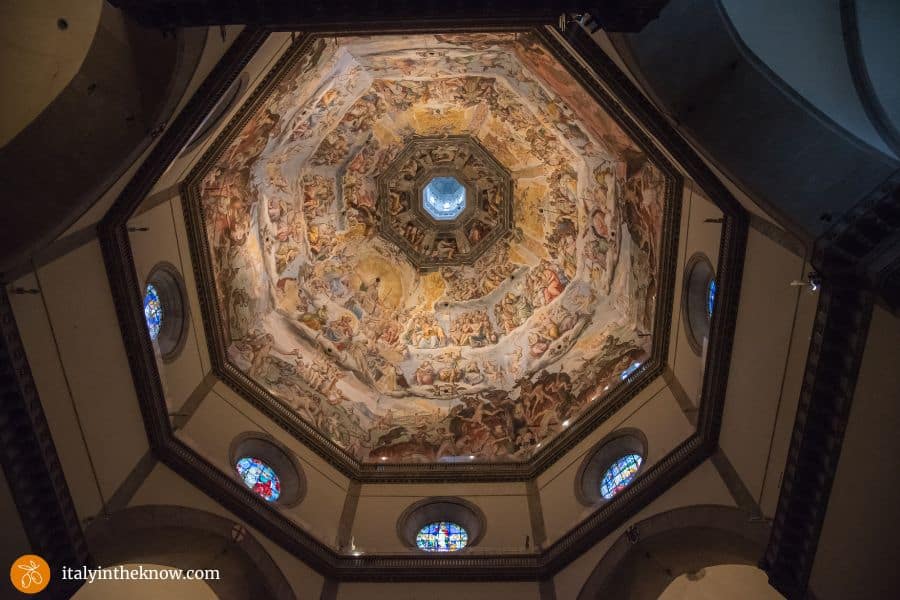
The interior of the dome remained blank until the 16th century. Vasari and then Zuccari painted the dome’s extensive frescos. Since illiteracy was high, these were designed to be a visual, religious instruction for Christians.
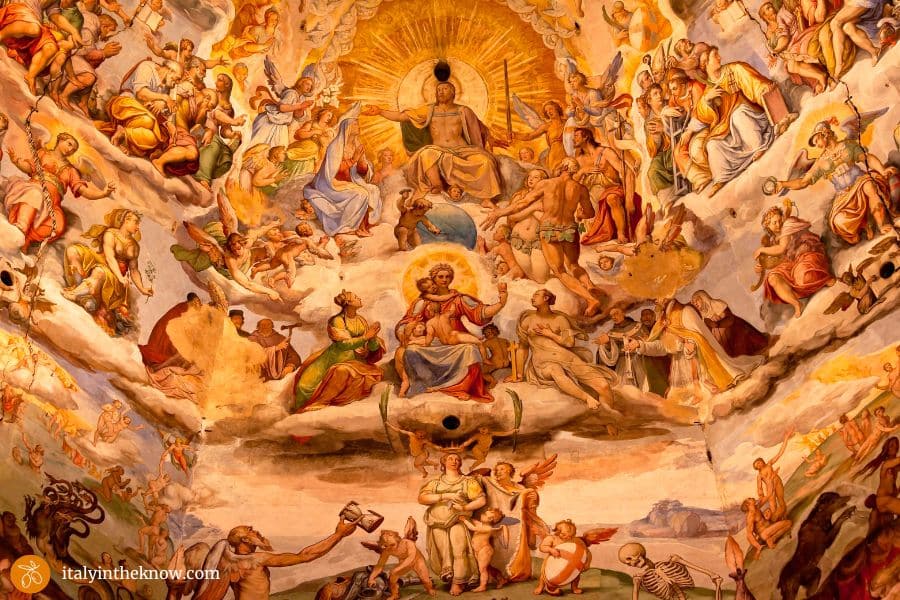
There is rich symbolism within the frescos. These frescos also intentionally connect to other works within the Cathedral. One example is the segment showing the Risen Christ.
Here you see the figure of Chronos (time) holding up a broken hourglass symbolizing the end of earthly time. This echoes the clock above the entrance painted by Uccello directly opposite.
The choir enclosure below the dome is an octagon with a footprint that matches the interior of the Baptistery. Over time, it has been rebuilt several times.
Brunelleschi created the original choir now lost. However, if you’re curious, you can see what it looked like on a coin displayed at the Bargello Museum.
This coin marks the Pazzi conspiracy, an infamous event that took place in the Cathedral. On Easter 1478, conspirators attacked Lorenzo and Guiliano Medici beside the choir.
Lorenzo escaped with minor wounds thanks to his friend Franceso Nori. Francesco shielded Lorenzo and was stabbed in his place. The conspirators killed both Guiliano de’Medici and Francesco Nori.
The event rocked Florence and you can see echoes of this throughout the city. Writing on the wall of Palazzo Davanzati is but one example. Today’s equivalent would be an assassination attempt of a president/head of state.
Afterward, Lorenzo commissioned Antonio Rossellino to build a mausoleum in Francesco’s honor. You can see this touching tribute today at the Basilica of Santa Croce.
Individual Works
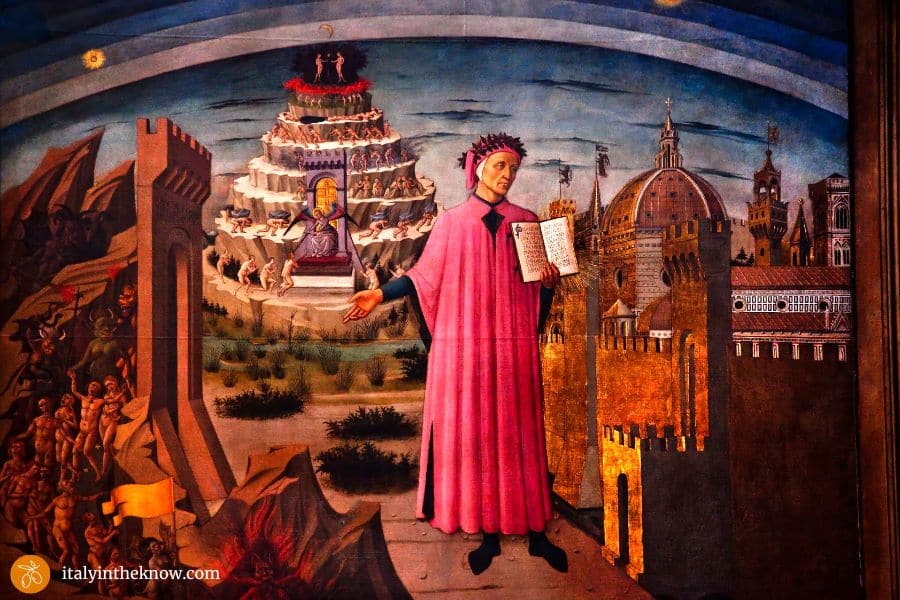
The Cathedral is full of amazing art in a variety of mediums. Like the exterior of the Cathedral, I recommend that you focus on a few that catch your attention. A few possibilities to note are:
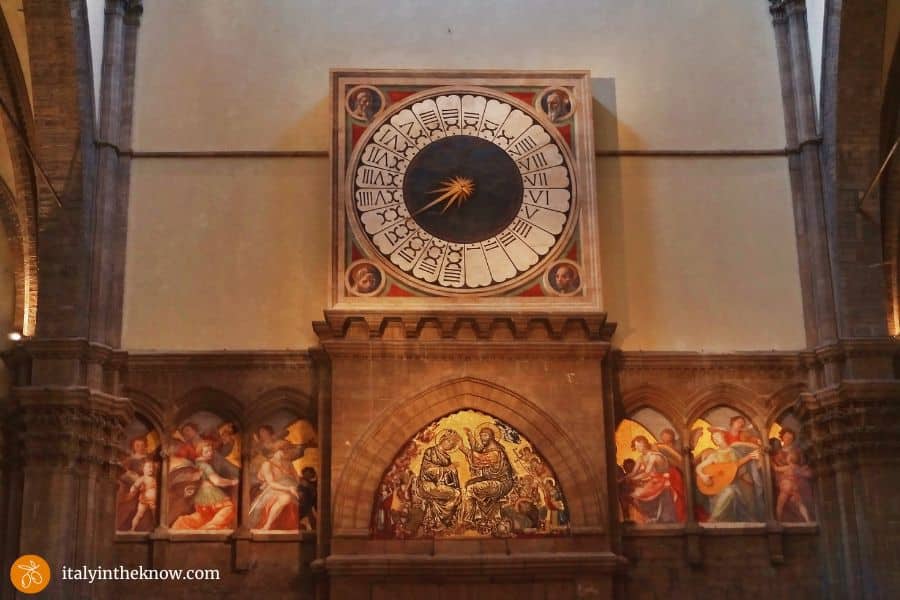
The Oriuolo (clock) above the entrance was one of the earliest monumental timepieces. It still works, showing 24 hours with a single dial that moves counterclockwise. However, don’t rely on it for the time. Its system counts hours from sunset of the day before instead of midnight.
The side aisles of the nave are lined with cenotaphs, memorials to famous Florentines. In the third bay on the left as you enter is the cenotaph to Sir John Hawkwood by Paolo Uccello. He is on horseback, a style that echoes a Roman equestrian statue. Uccello painted it in monochrome (terra verde) to simulate bronze.
Hawkwood was an interesting character of the time. An English mercenary, he became extremely wealthy and was highly regarded for his leadership. His Italian name was Ionnes Acutus which means “John the Sharp”. The fresco’s Latin inscription translates to:
John Hawkwood, British knight, most prudent leader of his age and most expert in the art of war
Further on is a cenotaph commemorating Dante Alighieri. The painting shows him holding his Divine Comedy with places he visited in the poem. On your right is hell. The Mount of Purgatory is behind him. And Paradise is on your right.
If Paradise looks like Florence, you have a good eye. The painting by Domenico di Michelino conveys the Florentine view of their city and the new Christian humanism of the times.
Giotto’s Bell Tower
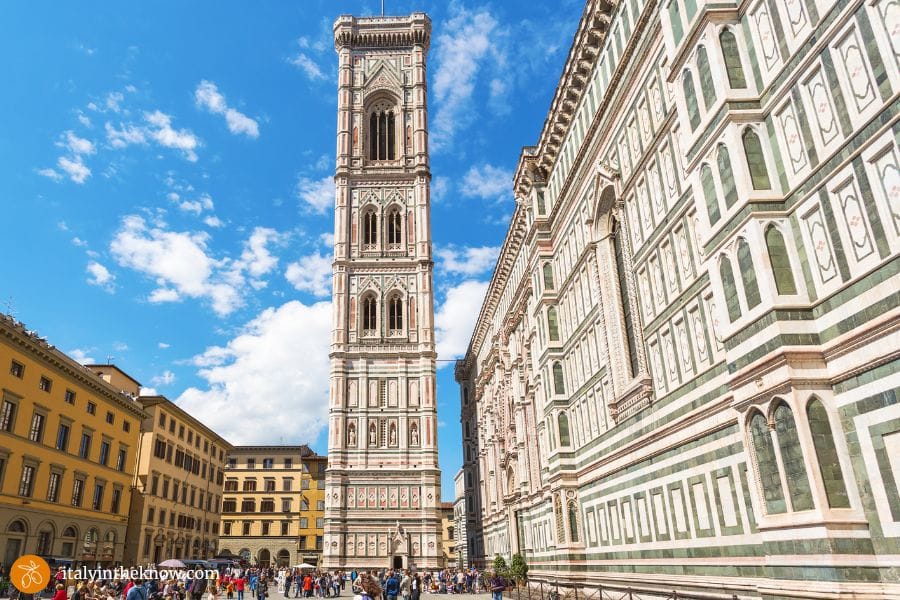
The bell tower is named after its designer, Giotto di Bondone. He directed the construction which started in 1334 until his death in 1337. At that time, Andrea Pisano took over. Then, Franceso Talenti completed it in 1359.
A beautiful example of Florentine Gothic style, it was an important project for the city. Unlike the Cathedral, it could be built within a generation. So, many Florentines of the time would live to see it completed.
The bottom three levels are filled with reliefs and statues. Each side has its own theme which points to the part of Florence related to it. For example, virtues and arts developed by man is the south side’s theme. So, it looks toward the political and commercial center of Florence at the time.
Most of what you see are copies. The originals are now in the museum, giving you a great opportunity to see them up close.
The 414-step climb includes a break midway where you can catch your breath and enjoy the view from one of Talenti’s windows. Along with the magnificent view of Florence, you get a great view of the dome itself.
With perspective from the Covid pandemic, the achievements of the Cathedral and Bell Tower have even greater significance. In April 1348, the plague known as the Black Death arrived in Florence and killed up to two thirds of the population.
While this obviously impacted construction, Florence remained committed to completing the project. In spite of the devastation, the Cathedral and Bell Tower are symbols of the Florentine’s remarkable hope and faith.
Opera del Duomo Museum
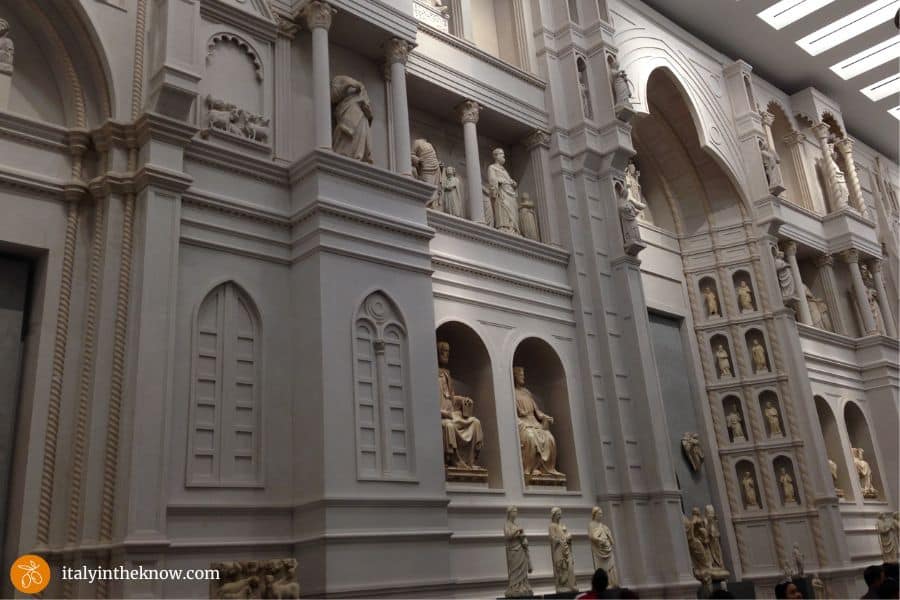
The museum was originally where bricks for the dome were made. Today it houses the originals of most of the exterior works of the complex’s sites along with other pieces from these sites.
This gives you a great opportunity to see these up close. A few of the not-to-miss highlights are:
- Reconstruction of the Cathedral’s original façade designed by Arnolfo di Cambio. Here you see the statues in their original position
- Display of the tools used to build the dome…truly amazing
- Doors of the Baptistery
- Choir lofts originally under the dome in the Cathedral by Luca della Robbia and Donatello. Luca’s joyous children singing and dancing illustrate the 150th Psalm.
- Pieta by Michelangelo that he sculpted for his own memorial chapel
- Gallery of reliefs from the Bell Tower
The Piazzas
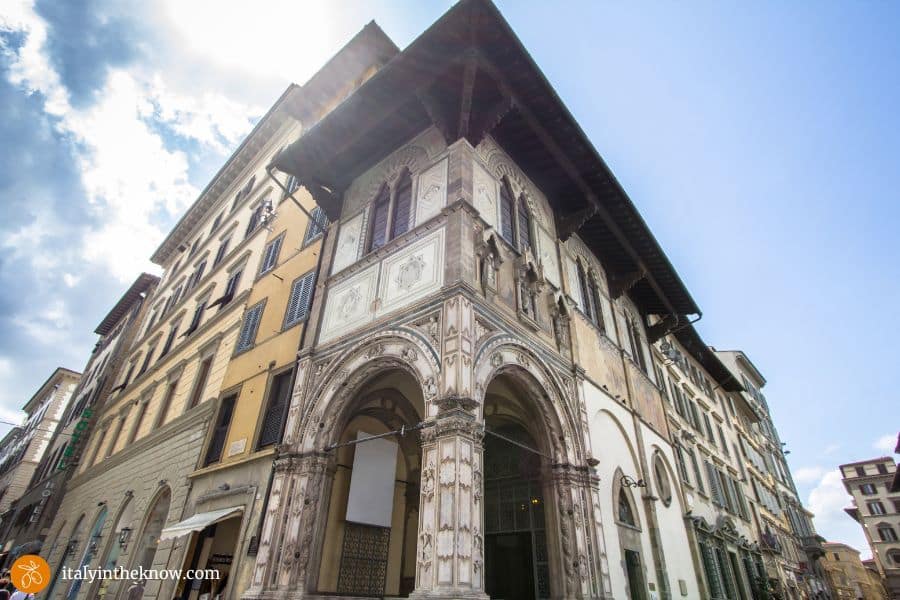
Often overlooked, the piazzas that house the complex sites provide great places to absorb the view and watch activity. Piazza San Giovanni encircles the Baptistery and Piazza del Duomo encircles the Cathedral and Bell Tower.
Piazza sites to note:
– The column on the north side of the Baptistery known as Colonna di San Zanobi. Topped by a flowered cross, the column marks the location of a miraculous event. On January 26, 429, despite the cold an elm tree sprouted new leaves during a procession transferring the remains of St. Zenobius to the Basilica of Santa Reparata.
– The beautiful, unique 12th century building at the corner of Via dei Calzaiuoli and Piazza San Giovanni. Known as Loggia del Bigallo, this was the headquarters of the Confraternita della Misericordia (Confraternity of Mercy).
Confraternities were lay organizations focused on religious observance and good works. A portion of the building served as an orphanage. The elaborate loggia is where children were shown to the public for recognition and/or adoption.
Visiting the Florence Duomo Complex
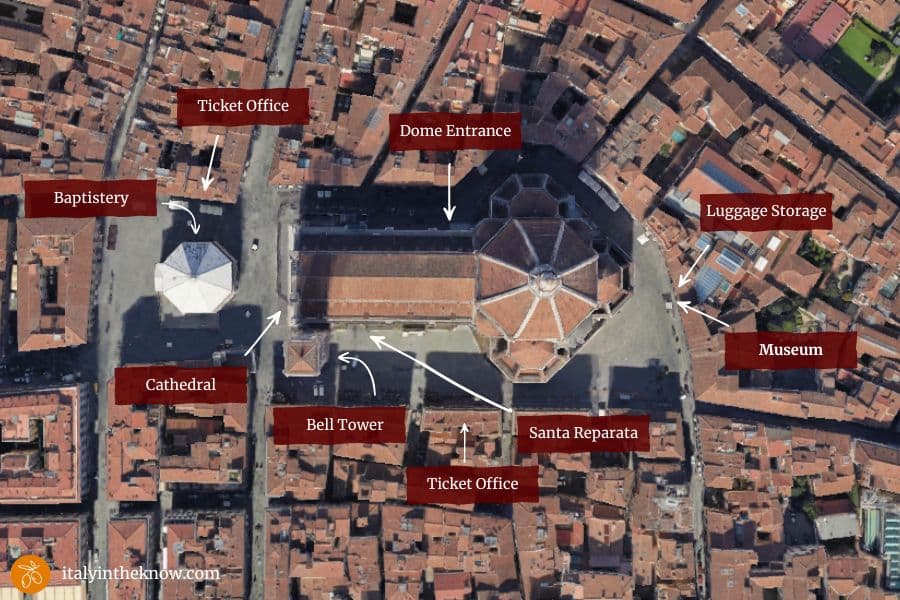
Basics
Opening Hours and Closures
Check here for current hours and closures. In particular, note that the Cathedral is closed on Sundays and for religious celebrations.
Tip: The Duomo Complex is the perfect thing to do on a Monday since many other sites are closed that day.
Tip: To avoid the long waiting line for the Cathedral, tour Santa Reparata beforehand. Then, exit into the Cathedral with no wait.
Dome and Bell Tower Considerations
Full disclosure so you know what you’re in for…visiting the Dome and Bell Tower means climbing to the top. The passages and stairs were built in the 14th and 15th centuries. Space is tight. So, think carefully if you have claustrophobia or other medical issues.
The Dome has 463 steps to the top and Giotto’s Bell Tower is 414 steps. There are no elevators and no air conditioning. But, once there, the views are magnificent! When climbing the Dome, you also have a chance to view the frescos close up.
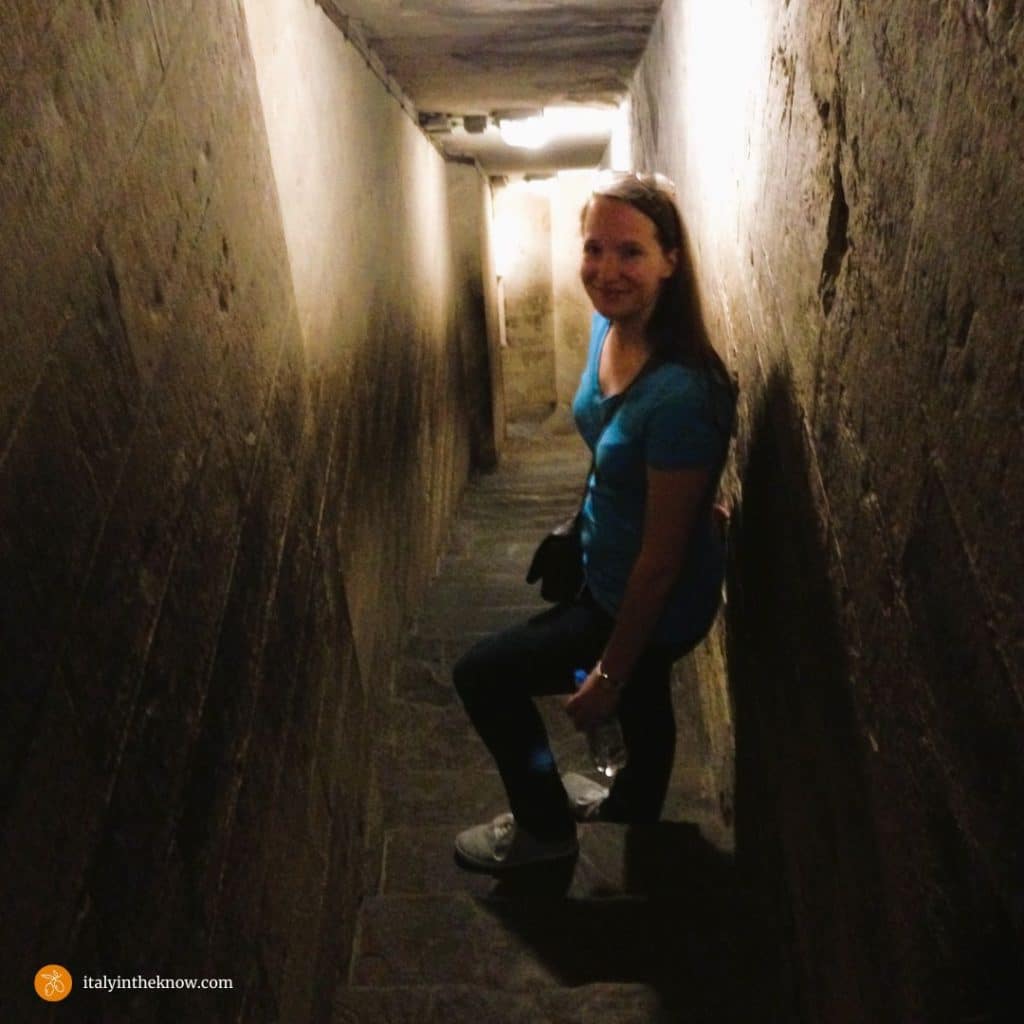
Tickets
Understanding tickets for the Duomo Complex sites can be confusing. Here you’ll learn your ticket pass options, how (and when) to buy your tickets, and how the passes work.
You’ll also find links for various tours offered by the Opera di Santa Maria del Fiore. This organization, founded in 1296, is responsible for oversight and conservation of the complex.
Ticket Options
You can’t get tickets for individual sites in the Duomo Complex. Instead, there are three kinds of passes that group different sites together. These passes don’t include the Cathedral because its admission is free and requires no ticket (which means lines can be incredibly long).
All passes are good for three calendar days. You get one entrance to each site included.
Passes and the places included with each are:
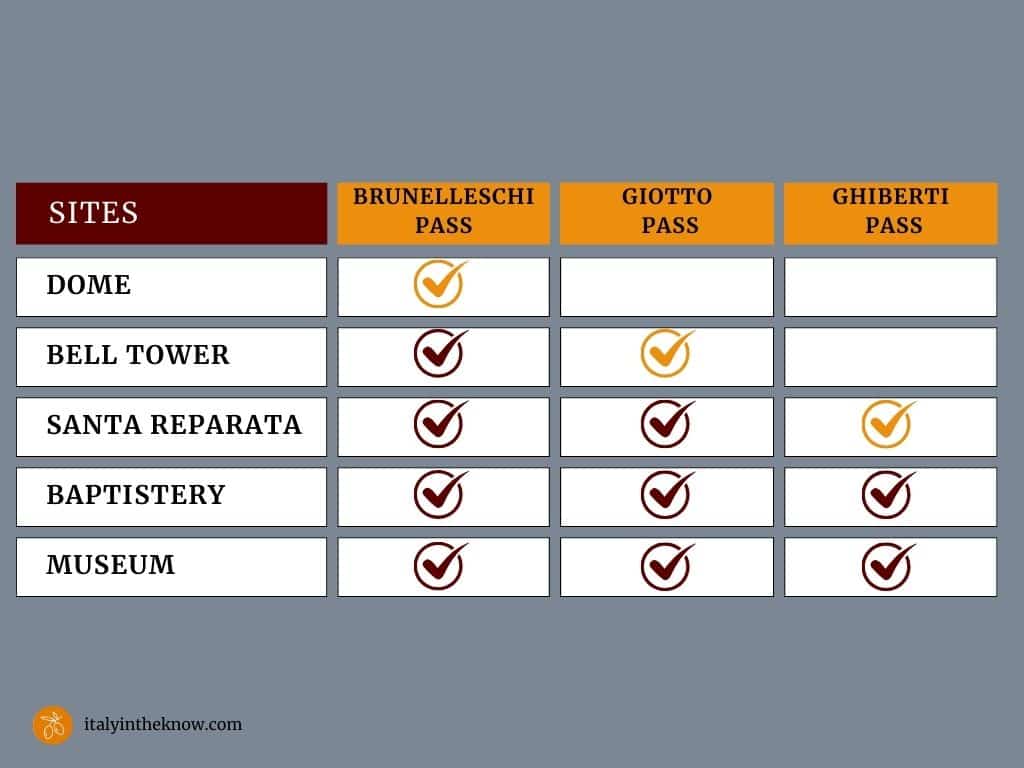
Also, there’s a new option called the “Ghiberti Pass On-Site” ticket. However, it is only available for in-person purchase at the two physical ticket offices found in Piazza Duomo and Piazza San Giovanni.
With the ticket, you get entry to the Museum and Baptistery (not Santa Reparata) within the three-day period you book. You do not need to specify a time slot for the site visits.
This choice is only offered when the regular Ghiberti Pass is sold-out or unavailable due to closure. Also, it isn’t available on the first Tuesday of the month when the Museum is normally closed.
Because of this, the option is best as an unplanned and last-minute add-on if you have extra time and/or your schedule changes. You shouldn’t expect or rely on this pass being available.
How Passes Work
Notice the gold check mark in the column for each pass. For that site, you must book a specific time slot on the first day of the three-day period you want to visit. No hourly reservations are needed for any of the other sites included in your pass.
For example, if I got a Giotto Pass, I need to specify a time to visit the Bell Tower (gold check) when I buy my ticket. Also, the Bell Tower visit must be on the first day covered by my ticket.
You can visit any of the other sites (dark checks) included in your pass any time within the three days your ticket is valid. The first calendar day of your visit starts at midnight.
So, in the Giotto’s Pass example above, let’s say I schedule my Bell Tower visit for 3:00 p.m. on a Monday. That means Monday is the first day my ticket is valid. So, starting on Monday I can visit any of the other sites included in the pass even if it’s before my scheduled Bell Tower entry time.
Note that for all passes, you get ONE entry per site within the 3-day period you booked.
Buying Tickets
The Duomo Complex is a top tourist site. So, online and ahead of time is the best way to buy your tickets.
Registering
Before you can buy tickets, you must register with an email and create a password. You’ll see this at the upper right on the tickets page. The system won’t let you make a purchase until you’ve done that.
Selection
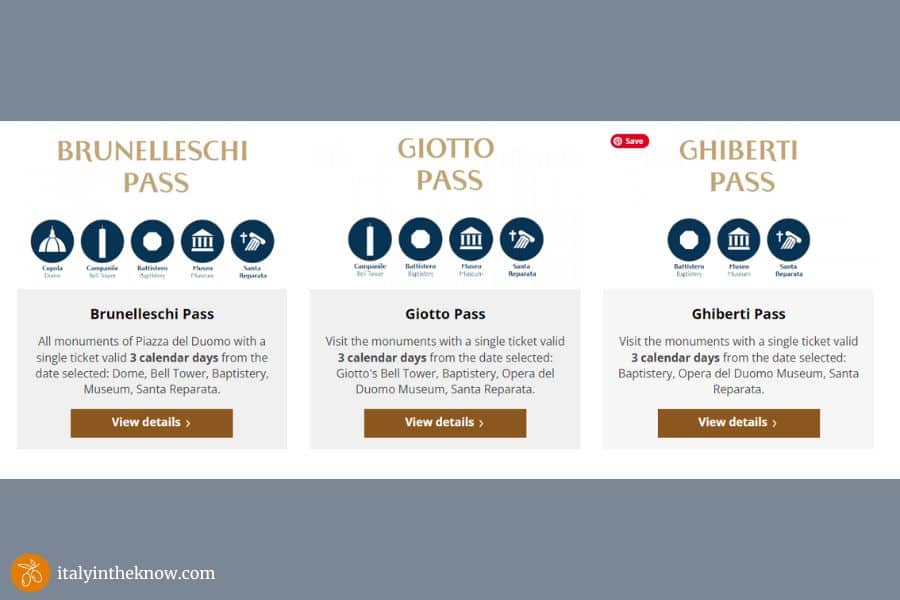
After logging in, you’ll see the three pass options above. Click and view details of the pass you want.
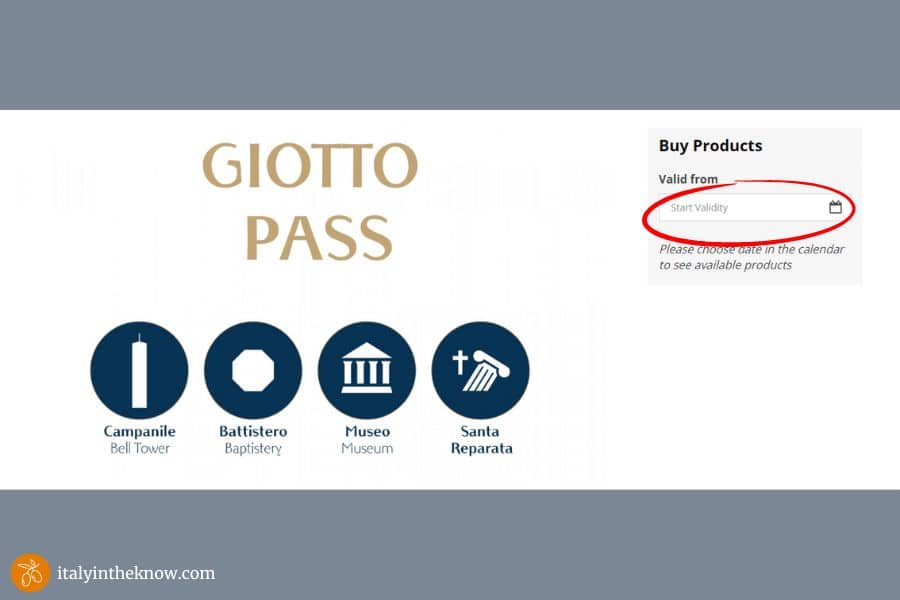
Details about the pass will show on the left side of the screen as you scroll down. A “Buy Products” box is at the upper right.
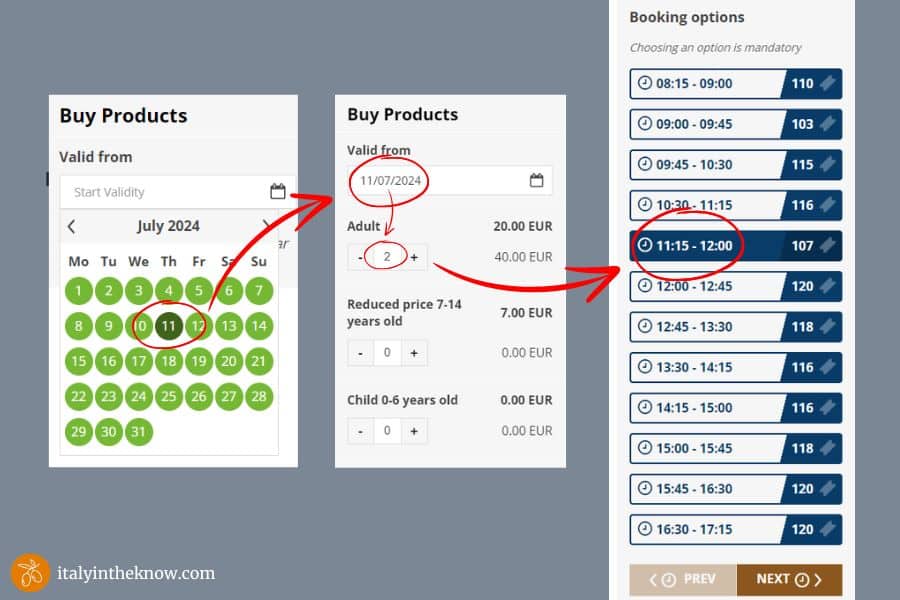
Click on the calendar icon and a drop-down calendar will appear. Scroll through and choose the date you want the three-day period to start.
This takes you to the next screen where you select the number of tickets you want within each category. Note that the ‘Valid from’ date appears showing the day first and then month and year.
Move down to booking options for the date you entered which is the start date of your ticket. Here you are selecting the time slot for the gold check marked site tied to your pass.
For example, with the Giotto Pass this will be the entry time you want for your Bell Tower visit. Note that you can’t change or cancel the time chosen.
Each bar has the time range on the left and the number of places available for that time slot. If you see a ‘0’, it means that time slot is sold-out.
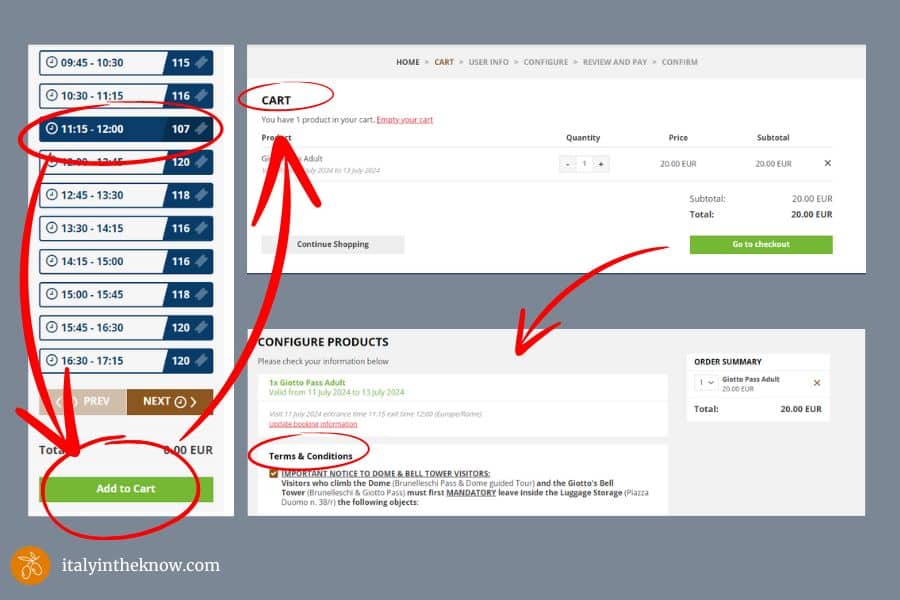
When you’ve selected your time, click “Add to Cart”. Review the cart then click “Go to checkout”. This takes you to a “Configure Products” screen where you must agree to terms and conditions. These relate to luggage which I cover later below.
Payment
Once you agree to terms and conditions, the system routes you to the payment screen to review and pay. Then, you receive the confirmation via email with the ticket(s) attached.
If needed, you can also access your ticket by signing in and going to the order details page under the ‘my account’ section.
You enter each individual site through turnstiles which read the barcode on your ticket. You can enter with either a printed ticket or one on your smartphone/tablet.
Exclusive and Guided Tours
There are several interesting tours offered by Opera di Santa Maria del Fiore experts. These give you different and unique perspectives and experiences. For example, a current tour of the Baptistery offers the opportunity to climb up to the restoration site and see the vault mosaics up close.
Check out these details about the available guided tours and exclusive tours (by request). If any of the tours appeal to you, look carefully at what they include. Some cover various Duomo Complex sites within the price so buying a pass may not be necessary.
During Your Visit to the Florence Duomo Complex
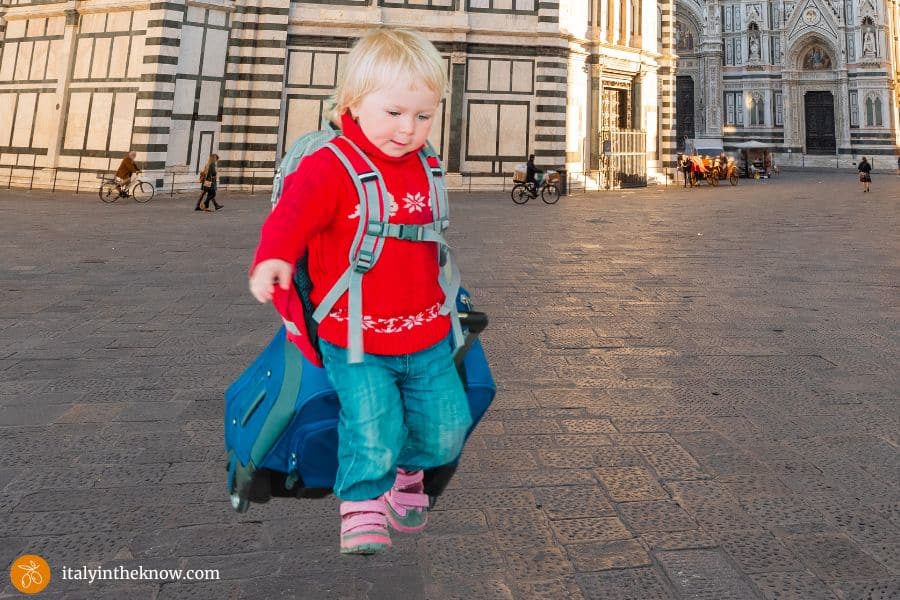
Here you’ll find answers to what to do about luggage, clothing requirements, and delays. Keeping these in mind will help you avoid problems and improve your visit. I’ve also included some good options for food when taking a break or dining.
Luggage, Backpacks, Bags, Etc.
Before climbing the Dome or Giotto’s Bell Tower, you must leave certain objects in the luggage storage facility next to the Museum at Piazza Duomo 38/r. There is no additional charge for this service. It is included in the price of your ticket.
The following items can’t be taken as you climb the Dome or Bell Tower:
- Suitcases, backpacks, parcels, containers, and large and medium-sized bags
- Umbrellas, canes (when not in use to assist with walking), camera tripods, and film cameras
- Knives, scissors and metal tools that could be dangerous for people and the exhibited works
Staff also have discretion to deny anything that they consider presents a danger to safety.
Don’t take a chance. If you show up at the site with something on the list, you won’t get in. Believe me, you don’t want to carry these items while climbing anyway! Check here for more information.
Clothing
The official website for the complex has the following clothing policy stated for the Cathedral:
Visitors are reminded that clothing appropriate for a place of worship is required to enter the Cathedral: access is not permitted with bare legs and shoulders, wearing sandals, hats, sunglasses.
While not specifically mentioned, the Baptistery is also a church. So, it would be good to choose clothing for a visit there based on the Cathedral’s policy. Basically, you should avoid plunging necklines, dresses or skirts above the knees, and shorts.
Also, when climbing the Dome and Bell Tower, you are dealing with hard stone and uneven surfaces. So, think carefully about footwear.
Heels, sandals and flip flops are a potential disaster waiting to happen. I always go with closed-toe shoes to protect my feet as much as possible.
Late Entry
You have a five-minute leeway beyond the time slot you booked for your pass. This is guaranteed. Bottom line is – be on time.
Piazza Food Options
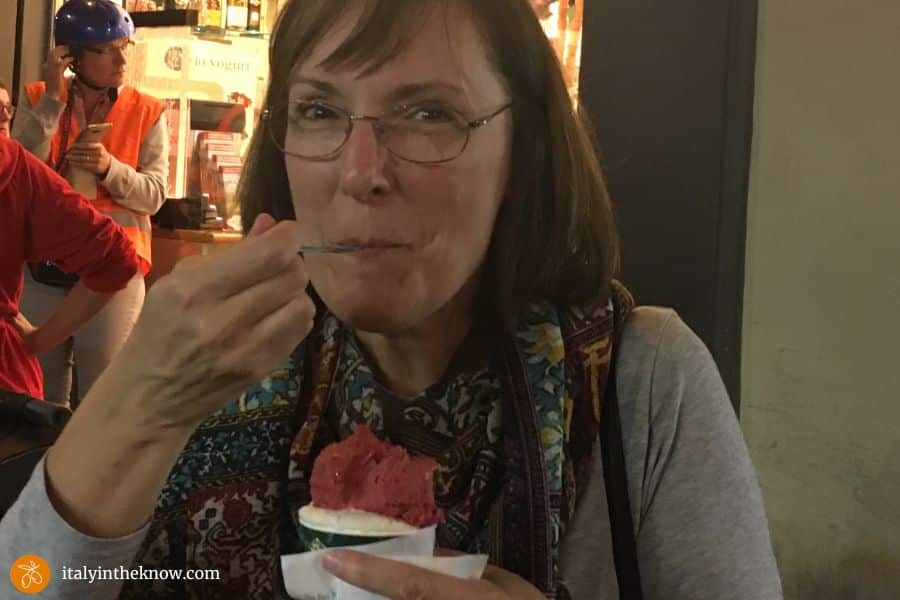
- Need a gelato break between site visits? Check out Gelateria Edoardo in Piazza Duomo on the right side of the Cathedral near the back. Be adventurous and try some of their unique combinations!
- The museum cafeteria and bar are good for lunch, a spritz, or an espresso break. Tables are available inside and out. Just remember in Italy there are two prices – one for eating at a table, another for consuming at the bar.
- Try Panini Toscana for the Florentine sandwich that visitors have come to love and expect. To-go service with some outside seating available.
- For sitting and absorbing the ambiance while dining al fresco, Osteria del Fiore is a good choice.
- If casual and pizza is what you’re looking for, try Giulio’s Bistrot and Wine Bar or Mister Pizza. Mister Pizza has vegan and gluten-free options too. Both have other menu items and have al fresco dining as well.
- Want to get a little farther away? Right around the corner from Piazza San Giovanni is a wonderful trattoria – Bottega di Fattoria at #3 Via dei Palchetti.
With this information, you have what you need for a terrific visit to this awe-inspiring complex. Please make sure to leave any questions and comments below. Buon Viaggio!
Click to explore italyintheknow on Pinterest. Discover more insights, exciting destinations, and tips for an unforgettable journey. Prepare for a fantastic trip with italyintheknow as your guide!
